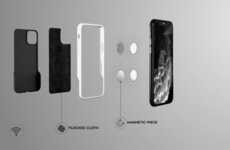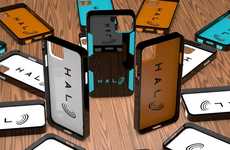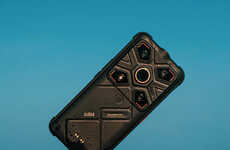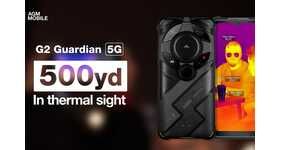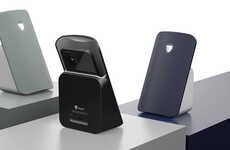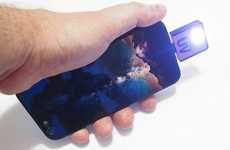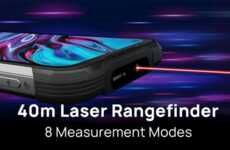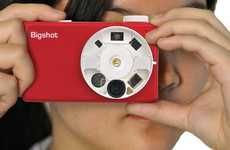
The Pantone 5 107SH Can Measure and Maps Gamma Rays
Michael Hines — June 8, 2012 — Tech
References: softbankmobile.co.jp & springwise
The Pantone 5 107SH is the world's first smartphone with a built-in radiation detector. The radiation-detecting handset was built by Sharp and is being distributed by Japanese telecom giant SoftBank. The phone has a Geiger counter which can detect gamma rays within the range of 9.99 microsieverts per hour and 0.05 microsieverts per hour.
The Pantone 5 107SH can show radiation levels both in real-time or mapped across a specific period of time. In addition to letting concerned citizens measure radiation levels, the smartphone also comes equipped with a 4.9 megapixel camera, a waterproof case and eight different color options to choose from. SoftBank's newest phone is designed to appeal to concerned Japanese citizens, but it has the potential to be a big hit around the world, especially in towns near nuclear plants and around nuclear waste.
The Pantone 5 107SH can show radiation levels both in real-time or mapped across a specific period of time. In addition to letting concerned citizens measure radiation levels, the smartphone also comes equipped with a 4.9 megapixel camera, a waterproof case and eight different color options to choose from. SoftBank's newest phone is designed to appeal to concerned Japanese citizens, but it has the potential to be a big hit around the world, especially in towns near nuclear plants and around nuclear waste.
Trend Themes
1. Radiation-detecting Smartphones - The integration of radiation detection technology into smartphones presents disruptive innovation opportunities in the field of personal safety and monitoring.
2. Real-time Radiation Mapping - The ability to map radiation levels in real-time lays the groundwork for disruptive innovation in the field of environmental monitoring and hazard management.
3. Enhanced Smartphone Features for Safety - The incorporation of additional features, such as waterproof cases, into radiation-detecting smartphones creates opportunities for disruptive innovation in the consumer electronics industry, specifically for safety-focused devices.
Industry Implications
1. Telecommunications - The integration of radiation-detecting smartphones within the telecommunications industry offers disruptive innovation opportunities for enhanced safety and personal monitoring devices.
2. Environmental Monitoring - Real-time radiation mapping capabilities open up disruptive innovation opportunities within the environmental monitoring industry, enabling more effective hazard management and response strategies.
3. Consumer Electronics - The inclusion of radiation detection features in smartphones introduces disruptive innovation opportunities within the consumer electronics industry, specifically for safety-oriented devices.
1.3
Score
Popularity
Activity
Freshness


